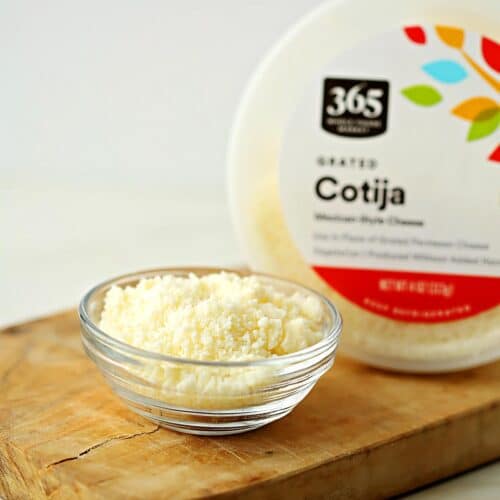Below is a cotija cheese substitute list for those days when you can’t find this cheese at the grocery store. This delicious, crumbly cheese is a common ingredient in many savory dishes.
In this article, we will explore a range of substitutes that can add that essential finishing touch to your favorite Mexican dishes.
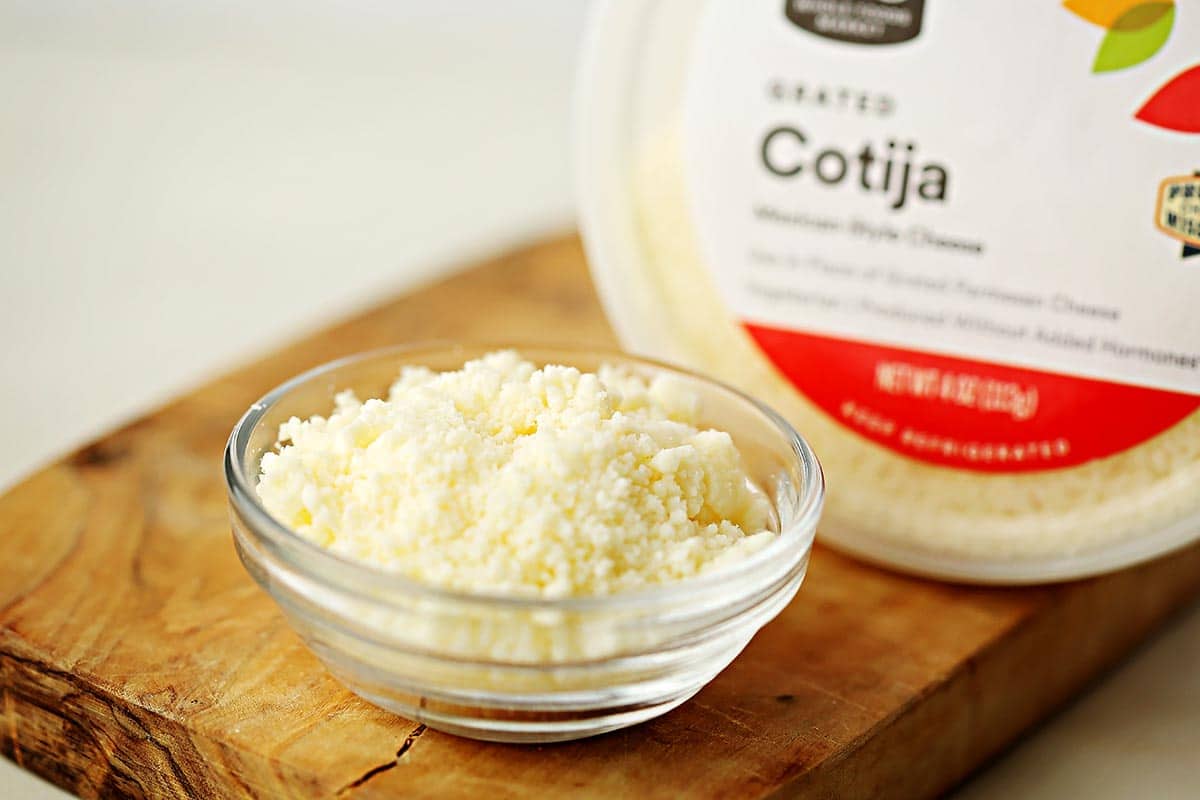
Cotija cheese has a crumbly texture and a distinctive salty and tangy flavor.
It has long been a staple in Mexican cuisine, lending its unique taste to a variety of dishes.
This famous semi-hard cheese originates from the town of Cotija and is in the same family as parmesan.
Cotija cheese is not a melting cheese. It is used for grating or crumbling over dishes.
Many recipes include cotija cheese, using it as a topping for soups, salads, and tostadas.
In the US, it is common to use it in pasta dishes.
There are two primary varieties of cotija cheese—each with a different flavor and consistency.
Fresh cotija cheese has a similar texture to feta and has a fresh, salty taste.
In comparison, aged cotija cheese has a stronger flavor and a harder, more crumbly texture.
This cheese variety goes through an aging process that lasts up to one year.
Here are 14 of the best substitutes for Cotija cheese.
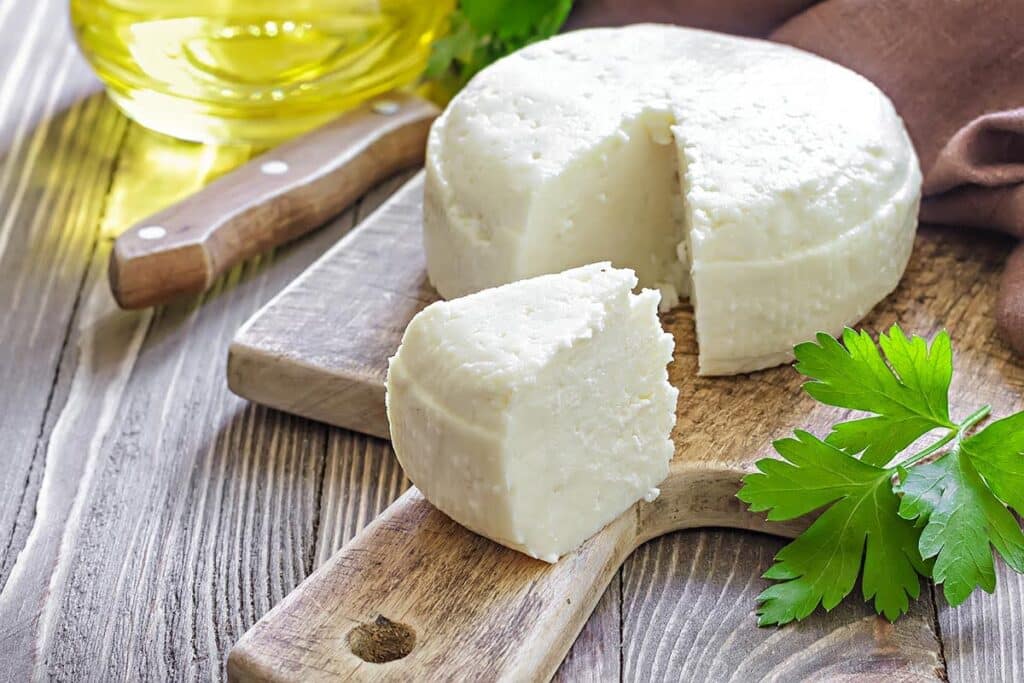
Queso fresco is a Mexican cheese that has a crumbly consistency.
You can also slice, melt, and shred this cheese for various recipes.
The appearance will be different. However, the saltiness is comparable to that of cotija.
Cooking Tip: The difference in flavor profile will be noticeable as it presents a slightly spicy taste.
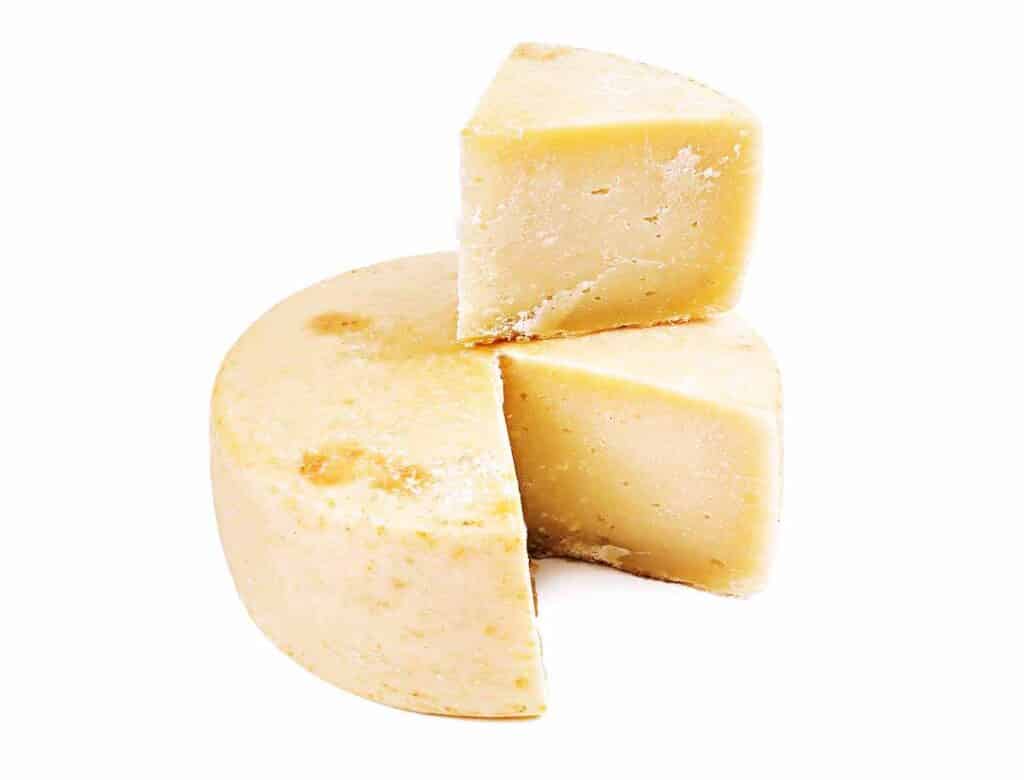
Pecorino Romano comes from Italy. This hard cheese offers a similar taste and appearance.
This cotija cheese alternative is also a more decadent cheese than cotija, so you can use it for melting.
Pecorino is excellent to use for pasta dishes or garnishes on guacamole and tacos.
Cooking Tip: There will be a taste difference when using pecorino Romano as it has a tangy flavor with smokey, sharp notes.
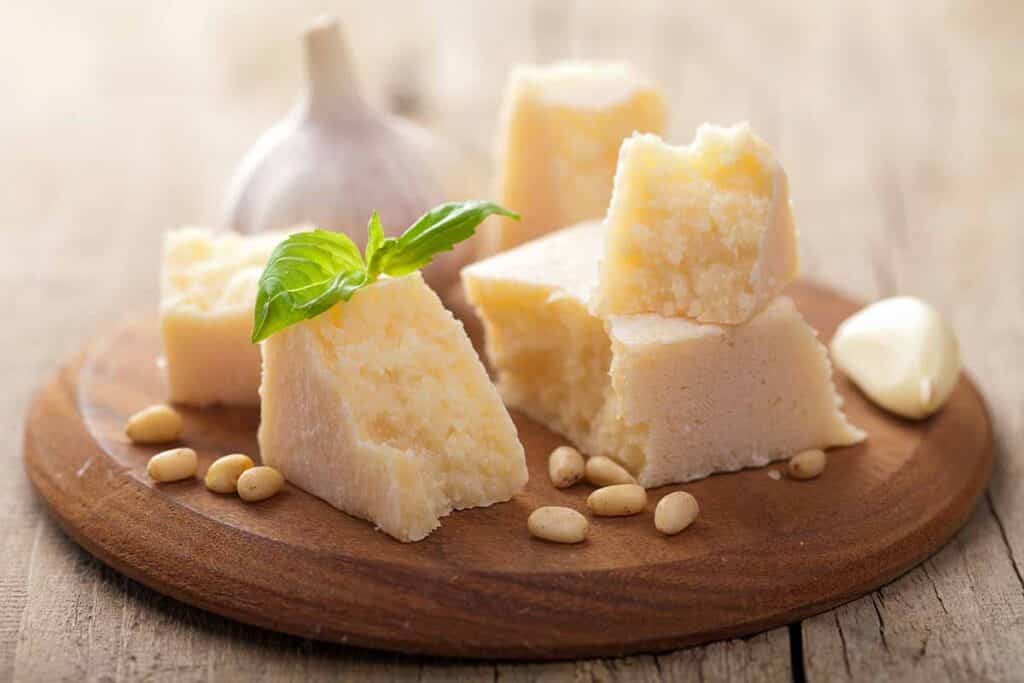
Parmesan cheese comes from the same family as Cotija.
It’s a great addition to pasta, along with a taco topping.
Expect a nutty, fruity, strong flavor when using parmigiana Reggiano.
You can use parmesan cheese by grating it like you would use aged cotija.
Cooking Tip: Due to its consistency and saltiness, parmesan makes the best cotija cheese substitute.
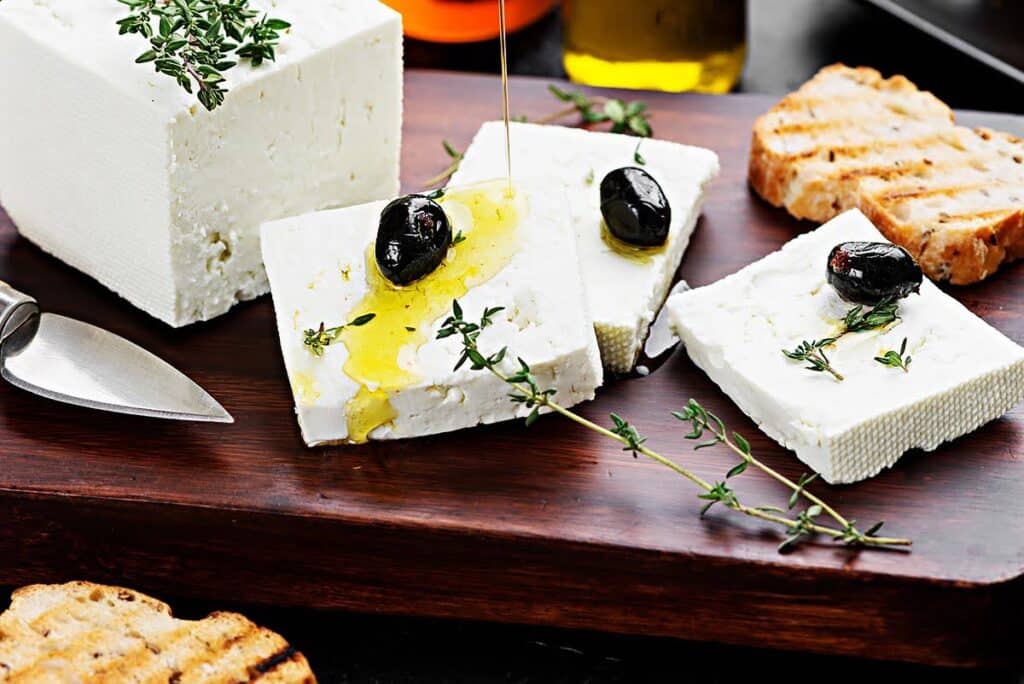
Feta makes one of the best cotija cheese substitutes since it resembles its consistency and saltiness.
While the taste is quite different, you can still use feta cheese as a salad topping, soup garnish, or on Elote or Mexican street corn.
You can find feta cheese at all local grocery stores, making it easily accessible.
Cooking Tip: There will be a noticeable difference when using feta instead of fresh cotija. You may need to alter the saltiness of feta as it’s less salty than cotija.
This version of cotija is shredded or finely ground, providing the same cotija cheese taste.
Its form makes it easier and more convenient to use it.
This option may be challenging to find in local grocery stores.
Cooking Tip: Use this variety of cotija in recipes that ask for mature cotija cheese. Try using it as a topping for soup, pasta, and enchiladas.
Ricotta Salata presents a salty taste and offers a similar white appearance to cotija.
You may notice a slight difference in taste, as it’s made from sheep’s milk instead.
You can crumble or grate this cheese over the desired foods.
Cooking Tip: When using this swap, you’ll need to add a small amount of salt to mimic the flavor better.

Cottage cheese works well in casseroles or enchiladas.
This creamy replacement is easily found at all grocery stores.
The cottage cheese taste is milky and mild enough that it bodes well with most Mexican seasonings.
To mimic cotija’s taste more closely, consider adding additional salt to the recipe.
Cooking Tip: You will need to use a cheesecloth to get rid of extra moisture in cottage cheese.

Goat cheese is made from goat’s milk.
The goat cheese taste is tangy and sour. This swap has a soft texture, though you can still crumble it for toppings.
You can use this alternative in Mexican cuisine, quesadillas, and enchiladas.
Cooking Tip: Ensure your other flavors combine well with the tanginess of goat cheese for the best substitute.
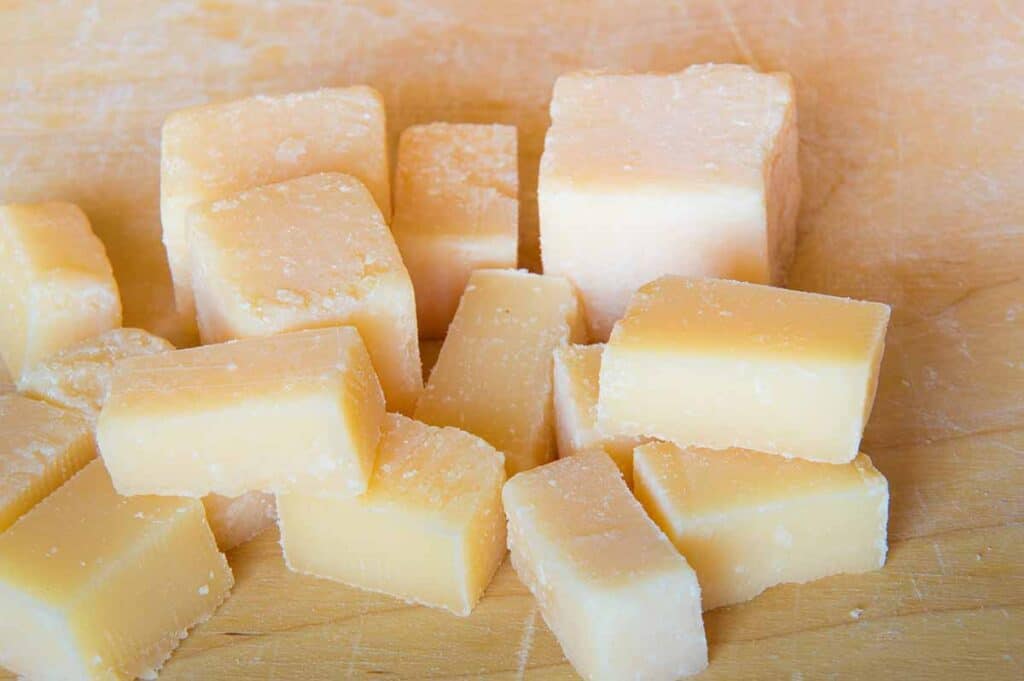
Grana Padano has a grainy texture, and it’s creamy, fruity, and nutty.
Even though the taste is quite different, you’ll still be able to enjoy the slight saltiness.
Cooking Tip: It is an excellent option for those seeking an Italian cheese like parmesan with a lower price tag. Use it in salads, pasta, and tacos.
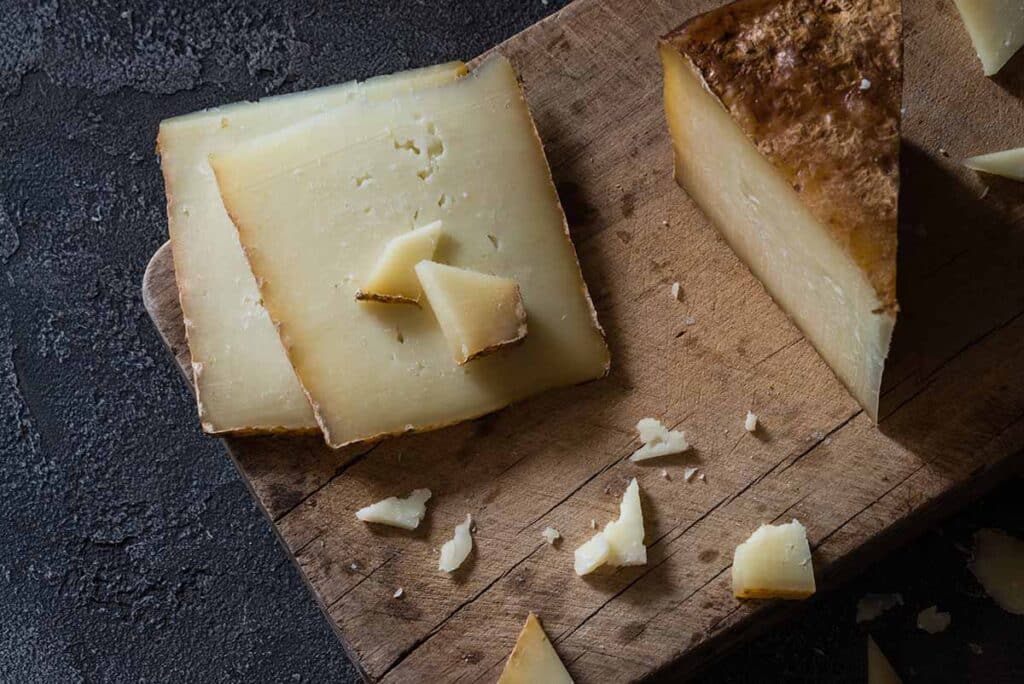
Wensleydale comes from the UK; it offers a complex flavor with a smokey, rich, creamy, sweet taste.
This cheese won’t make a good substitute for every dish.
Cooking Tip: Expect a salty and crumbly texture. Use this option for quesadillas and dips, as it melts well.
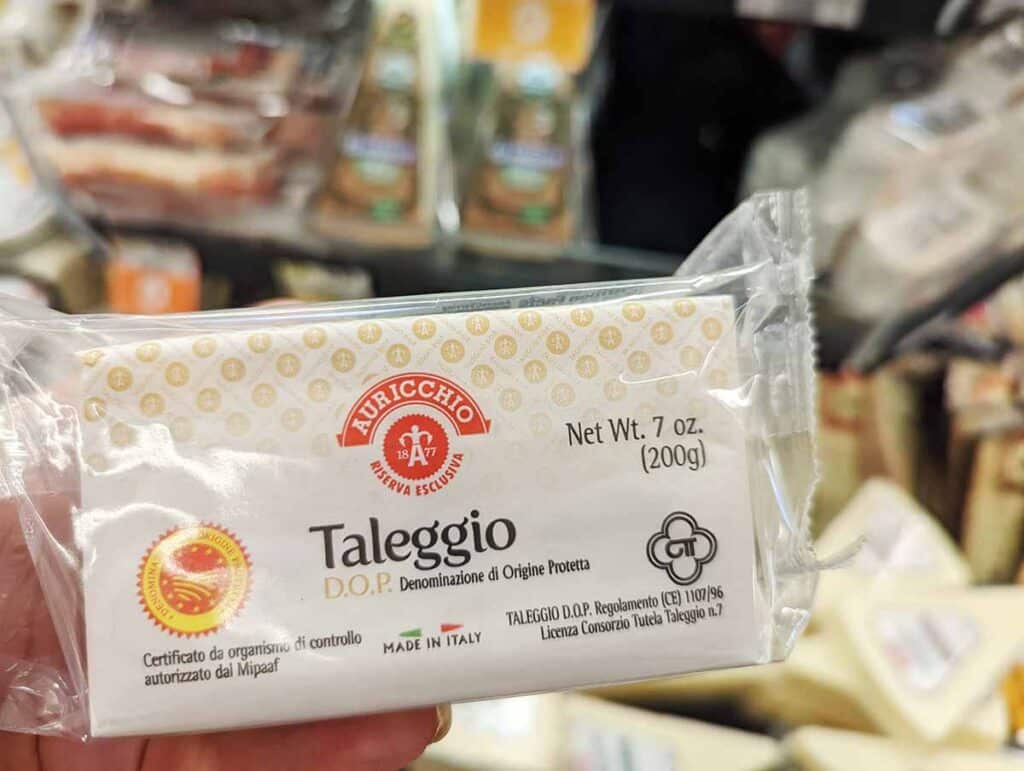
Taleggio offers a creamy consistency with a subtle, fruity, tangy flavor profile.
This is an affordable option found at many grocery stores.
When using Taleggio, there will be a difference in appearance and consistency.
Cooking Tip: This swap works well for melty recipes like dips and enchiladas.
Anejo, also known as añejo or queso añejo, is a Mexican semi-firm option that matches mature cotija’s texture and saltiness.
This replacement ages similarly, even offering a similar texture during the aging phases.
Cooking Tip: Use Anejo in casseroles and burritos. The appearance is much different as Anejo is rolled in paprika, providing a spicy kick flavor compared to cotija.
Red Fox or aged Red Leicester cheese offers a complex taste ranging from sweet to nutty and savory.
It has a slight crunch, providing a unique texture with an appearance similar to cheddar.
This swap is less common, so finding it at local grocery stores can be challenging.
Cooking Tip: Use Red Fox in any recipe to provide a similar saltiness.
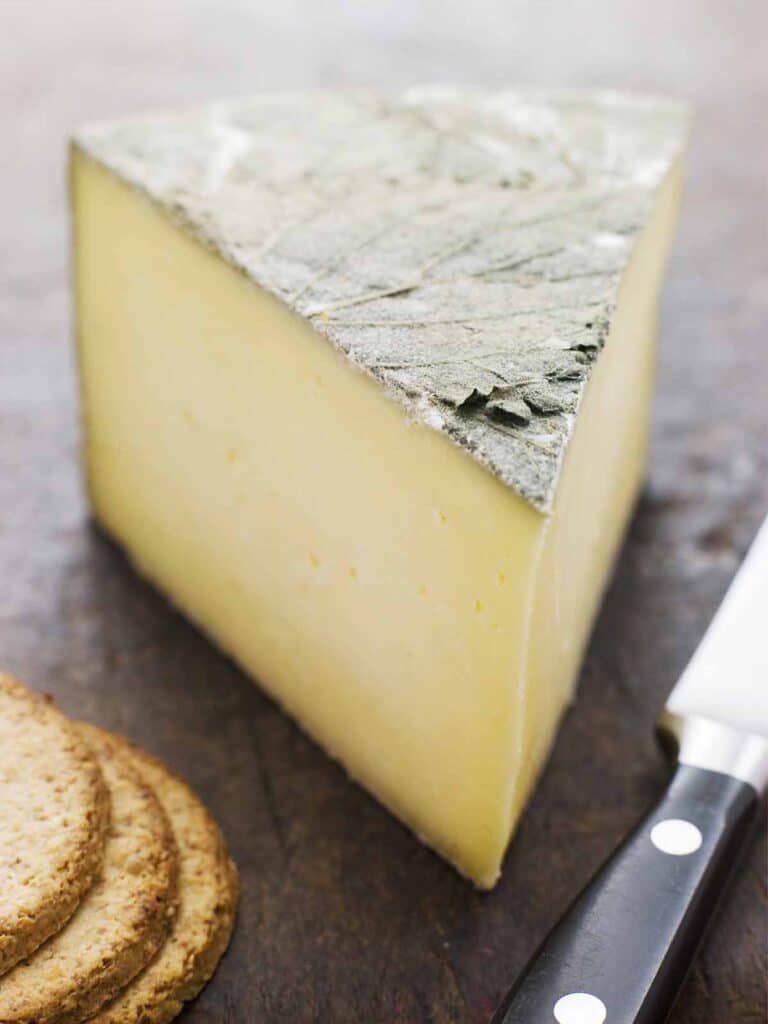
Gorwydd Caerphilly is a semi-soft cheese with a crumbly center and soft exterior under the rind.
It offers a mild aroma, perfect for recipes where you want the other scents to be at the forefront.
Cooking Tip: This swap also provides a delightful saltiness, mimicking that of cotija cheese.
The two best cotija cheese substitutes include parmesan and feta. Parmesan is the best match flavor-wise, while feta mimics the crumbly texture.
Cotija cheese is similar to parmesan, sharing commonalities in flavor, consistency, and cheese salt level. While they have different origins, they are excellent replacements for each other. Both options are made from cow’s milk, which accounts for their similarities.
Cotija and queso fresco are not the same. Queso fresco is much milder because it is a fresh cheese.
Cotija cheese has a delicious salty and milky taste. This cheese is often used as a garnish on various foods, from enchiladas and burritos.
While there’s not a perfect replacement for cotija, many alternatives will provide a similar salty taste and appearance. Parmesan works as a good cotija cheese substitute option due to its taste, appearance, and availability. If you can locate ricotta Salata or cotija molido, these swaps are excellent choices as well.
